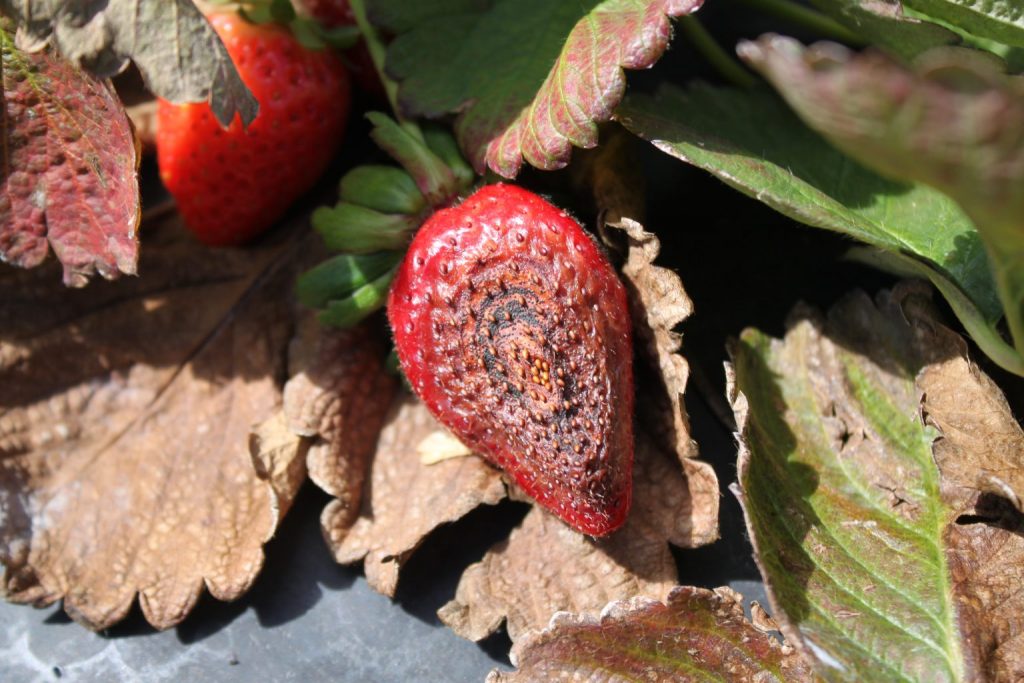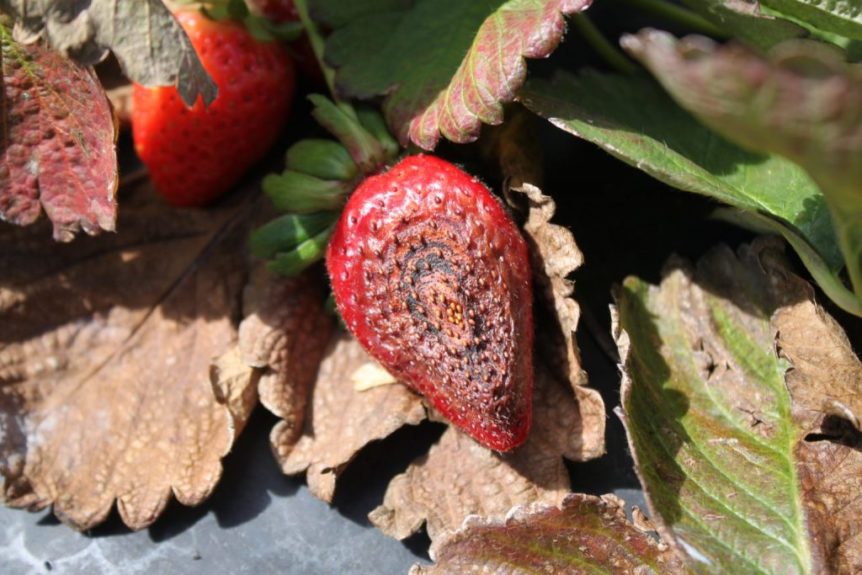
By Clint Thompson
Strawberry growers are risking this year’s crop by growing plug plants impacted by Neopestalotiopsis disease. One industry expert applauds the communication between the nurseries and potential buyers about the risk to this year’s crop.
“For one thing I really appreciate the nurseries for being up front and transparent as they’re being. I don’t think we used to see that in the past. They’re really being hurt but are still communicating and up front. I think that’s really important that the communication is there,” said Natalia Peres, professor of plant pathology at the University of Florida Institute of Food and Agricultural Sciences (UF/IFAS) Gulf Coast Research and Education Center.
Alarm Bells
Phil Brannen, University of Georgia (UGA) Cooperative Extension fruit disease specialist, cautioned growers in August about the high potential risk for Neopestalotiopsis with plants originating from Prince Edward Island. He noted that nurseries were canceling orders or advising plug plant growers and producers to take plants at their own risk. The disease levels currently observed in nurseries would likely impact the supply of tips, and therefore, plug plants for many strawberry producers.
“It’s unfortunate, because it shows it is spreading more to other geographic areas, especially other geographic nursery areas. It’s very concerning,” Peres said.
While the disease was confirmed in nursery plug plants, its potential will not be fully realized unless there are appropriate weather conditions.
“Neopestalotiopsis is not easy to control when you start with infected plants like that. But if growers decide to take the risk, there are a few things we know already that, for one thing, the weather conditions are going to dictate how much of a loss they’re going to have,” Peres said. “They’re going to have some loss by taking infected plants, but it’s hard to predict how much. If the weather is dry and not conducive, they might still be able to get a good crop. But if the conditions in the fruit fields get some rains and there are conducive conditions, they might get hurt.”










